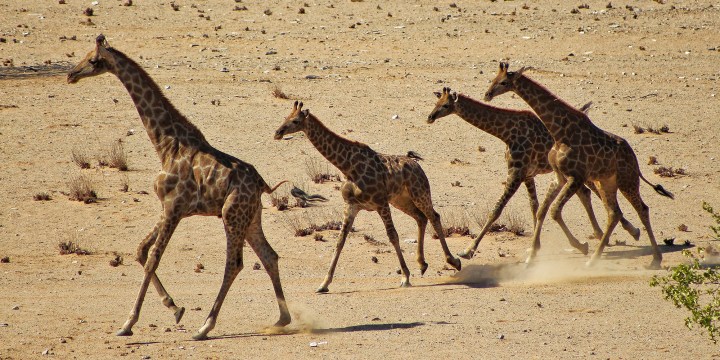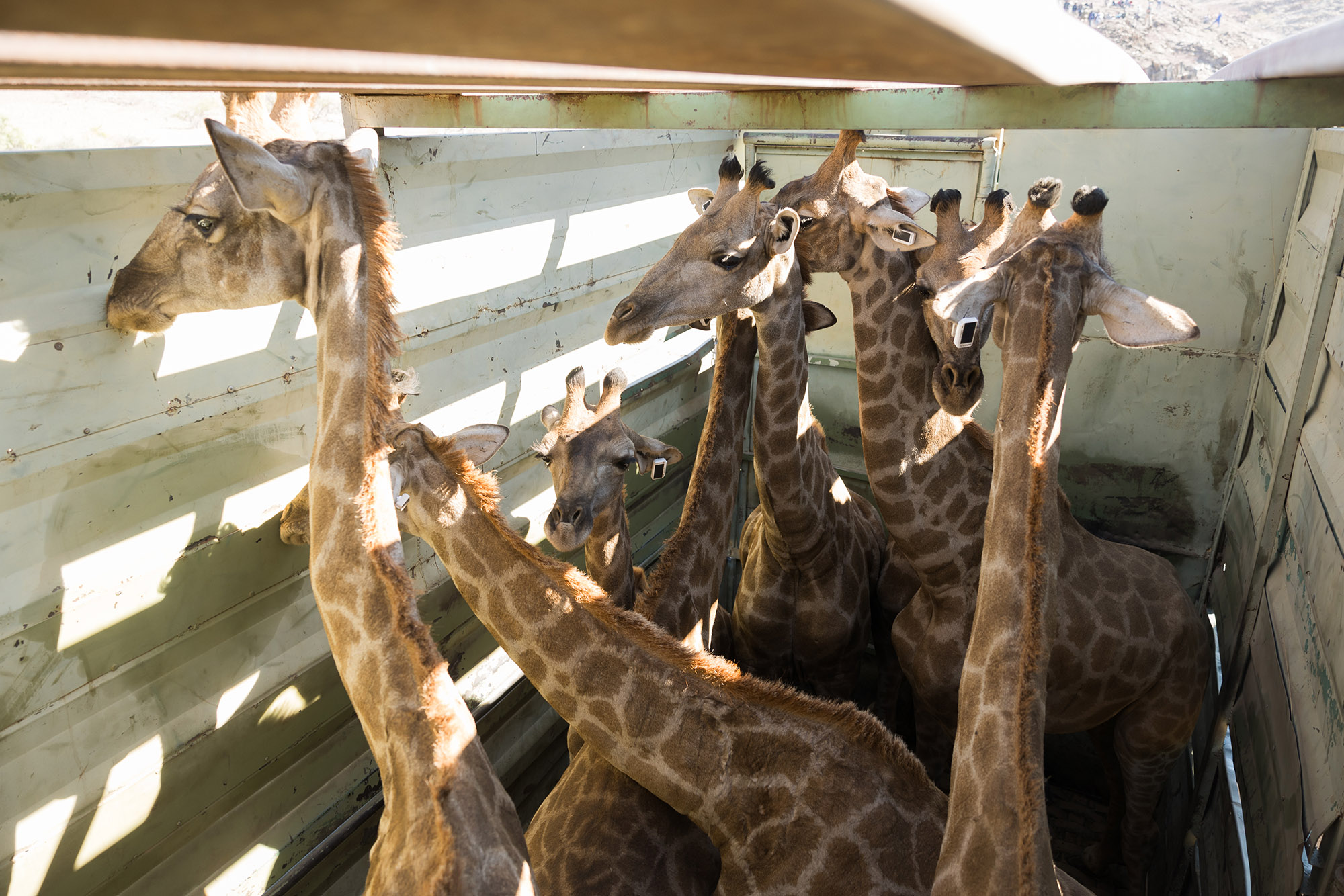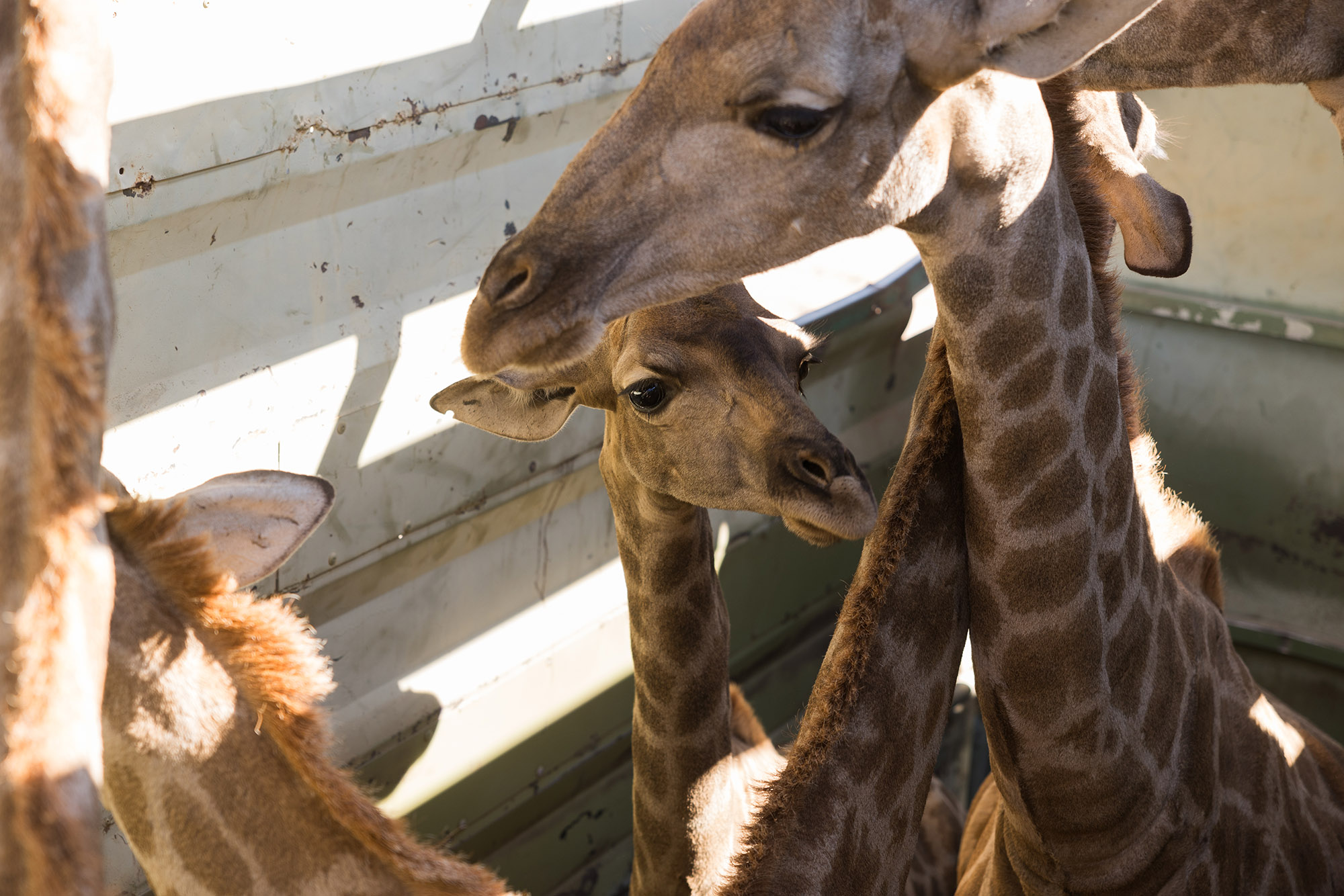AFRICAN WILDLIFE
Locally extinct ‘smokey giraffes’ reintroduced to Iona in a new era for conservation in Angola

Captured on a private game farm in central Namibia, the 14 giraffes were trucked roughly 1,300km northwards to Iona National Park and released on 5 July after a 36-hour journey.
Angolan giraffes are back home in southeast Angola after an absence of several decades. This follows the reintroduction of 14 of these towering animals to the Iona National Park after a 1,300km road journey from neighbouring Namibia last week.
This unique subspecies of the tallest animal in the world (also known as the “smokey giraffe” due to its darker-than-normal colouring) is specially adapted to the semidesert conditions of southern Angola, where it was virtually extirpated in the aftermath of the Angolan civil war.
According to wildlife author Stephen Carton-Barber, the species has more recently become known to many as the “Namibian giraffe” due to its demise in the country it was first named after. Assessments by the International Union for the Conservation of Nature suggest that the Angolan subspecies (Giraffa camelopardalis angolensis) was extinct in Angola by the late 1990s.
This is one of the reasons the symbolic return of more than a dozen of these animals from Namibia has cheered wildlife conservationists.

A specially designed transporter arrives in Angola’s Iona National Park after a journey of more than 1,000km from central Namibia. (Photo: Priya Tekriwal)

Some of the 14 Angolan giraffes moved to Iona National Park. Adults can grow to a height of 5.5 metres. Their legs alone are taller than most people. (Photo: Casey Crafford)
Their return is also significant from an ecological perspective because these long-necked creatures help to shape the vegetation by browsing at a higher level than antelope, and also by dispersing seeds due to their selective feeding habits.
Captured on a private game farm in central Namibia, the giraffes were trucked roughly 1,300km northwards to Iona National Park and released on 5 July after a 36-hour-journey.
The translocation was sponsored by the Wyss Foundation in the US and the Giraffe Conservation Foundation in Namibia, and is the first of multiple giraffe translocations to ensure a viable population in the park.
Giraffe Conservation Foundation director Stephanie Fennessy described the move as “an extraordinary achievement” for giraffe conservation in Angola.
“By reintroducing giraffe to their historical range, we re-establish their range, ensure their long-term survival and contribute to restoring the ecological balance in the region.”
Iona, a sprawling 15,000km² national park known for its combination of desert, semidesert, grasslands and mountain scenery is now co-managed by the Angolan government and the African Parks network which has offices in Johannesburg, Amsterdam and New York.
African Parks signed a long-term management agreement with the Angolan Ministry of Environment in 2019 to collaborate in protecting the park’s natural and cultural heritage, and also redevelop ecotourism.
African Parks says there is potential to reintroduce elephants, rhinos and lions in future, to boost the existing mix of aardwolf, kudu, mountain zebra, impala, springbok, steenbok, oryx, brown hyena, leopard, black-backed jackal and cheetah.
African Parks manages 22 national parks and protected areas in 12 countries covering more than 20 million hectares in Angola, Benin, Central African Republic, Chad, Democratic Republic of Congo, Malawi, Mozambique, the Republic of Congo, South Sudan, Rwanda, Zambia and Zimbabwe.
Abias Huongo, Secretary of State for Angola’s Ministry of Environment, said in a statement that “the reintroduction of giraffe to Iona National Park is a remarkable milestone in Angola’s conservation journey. This significant endeavour demonstrates our commitment to preserving our country’s natural heritage.
“Together, we are building a future where both people and wildlife thrive.” DM
To read all about Daily Maverick’s recent The Gathering: Earth Edition, click here.



















 Become an Insider
Become an Insider
Comments - Please login in order to comment.